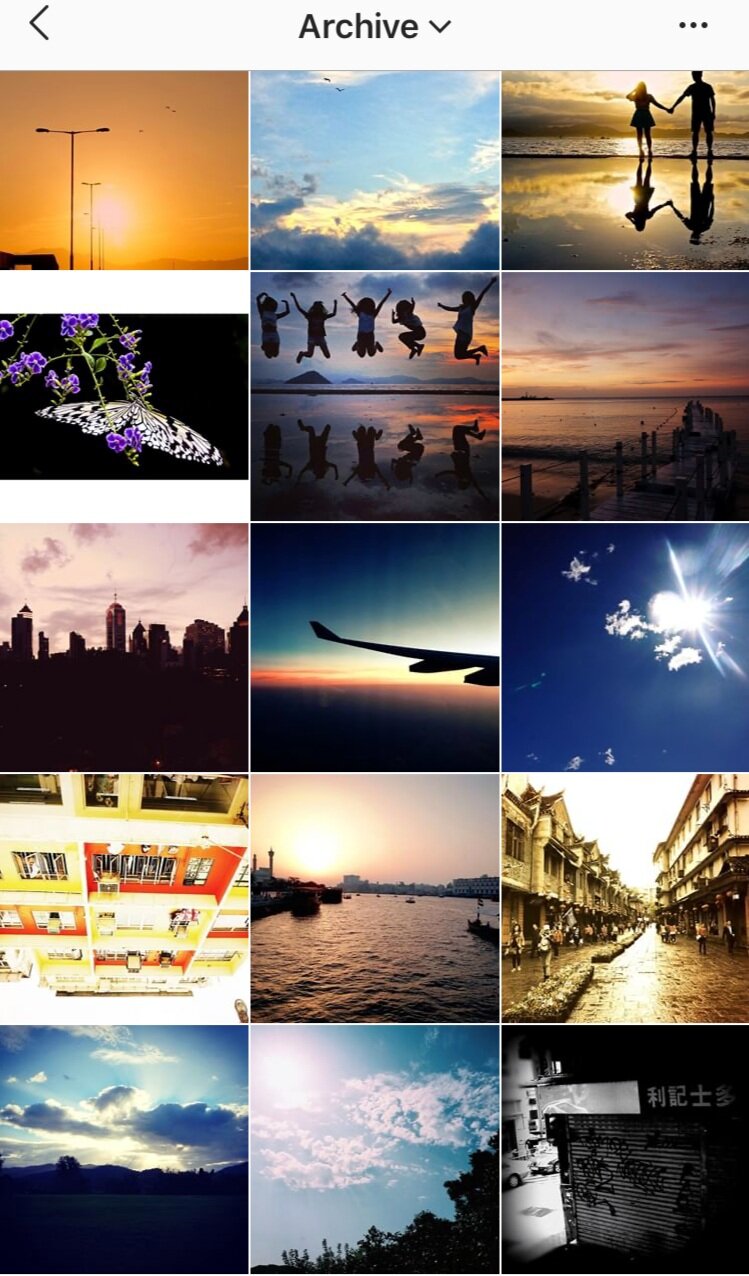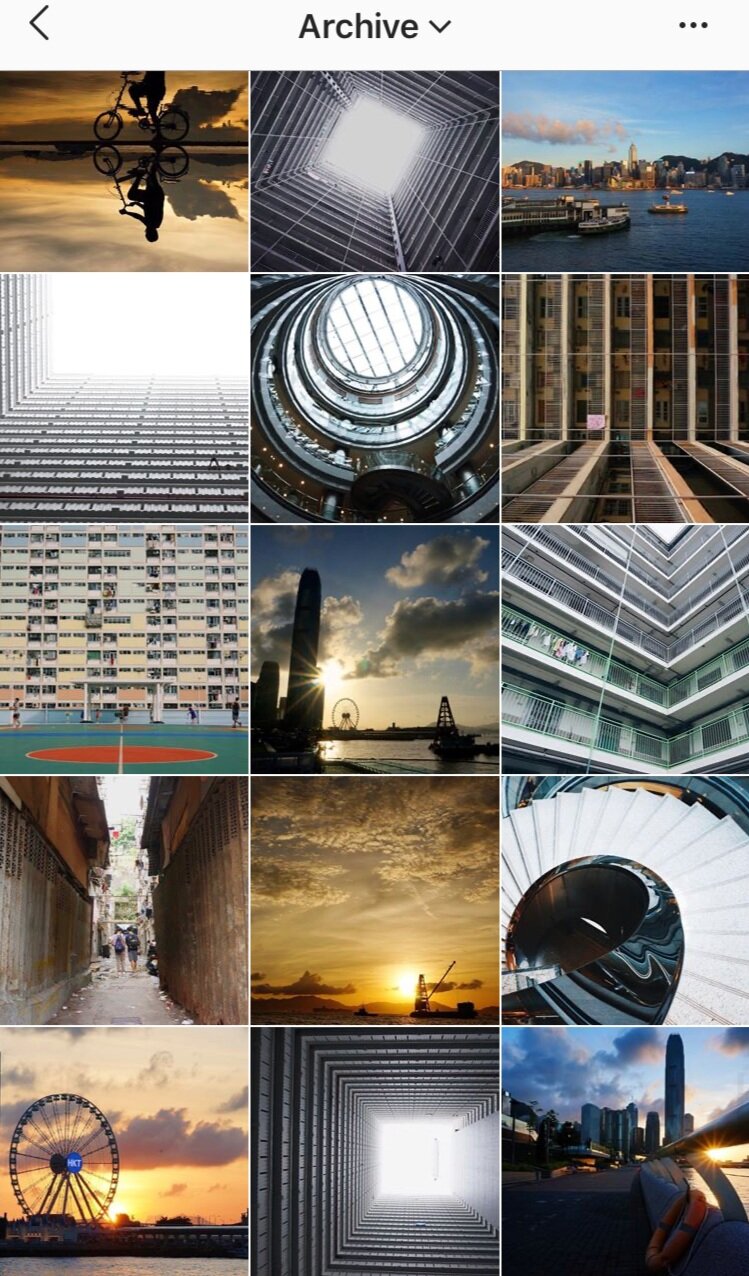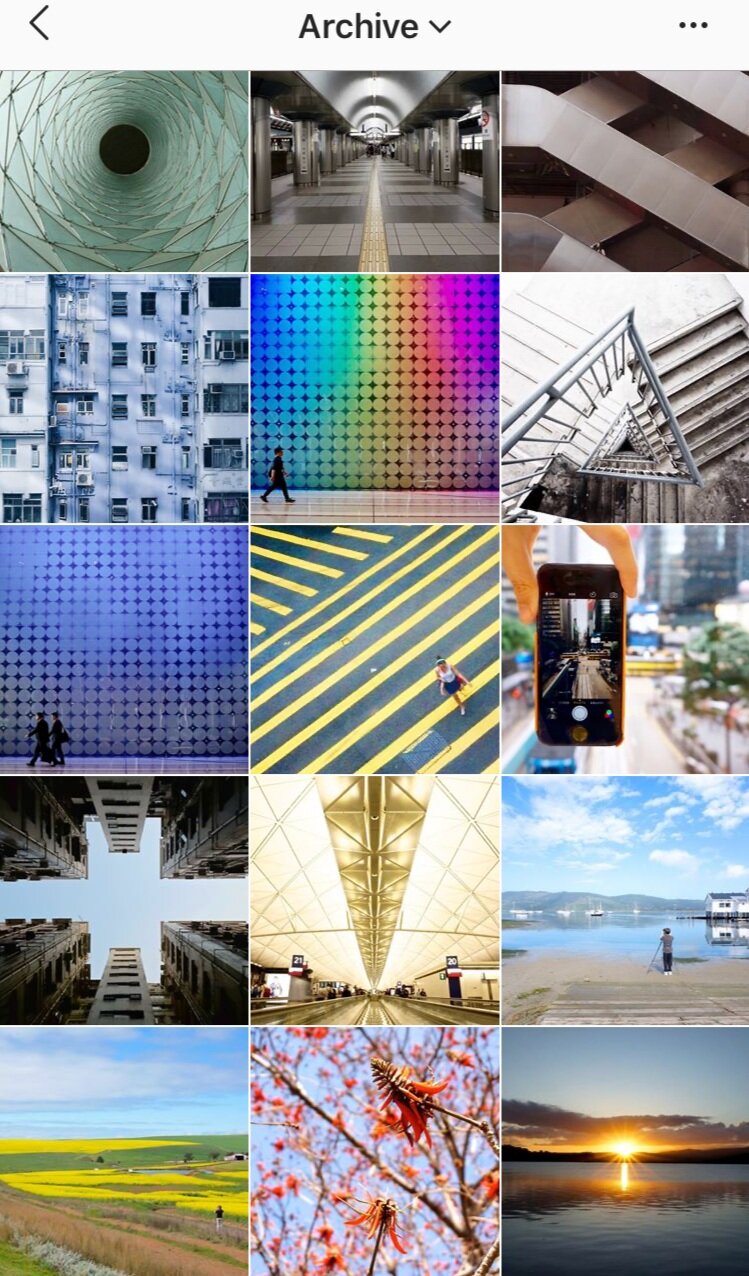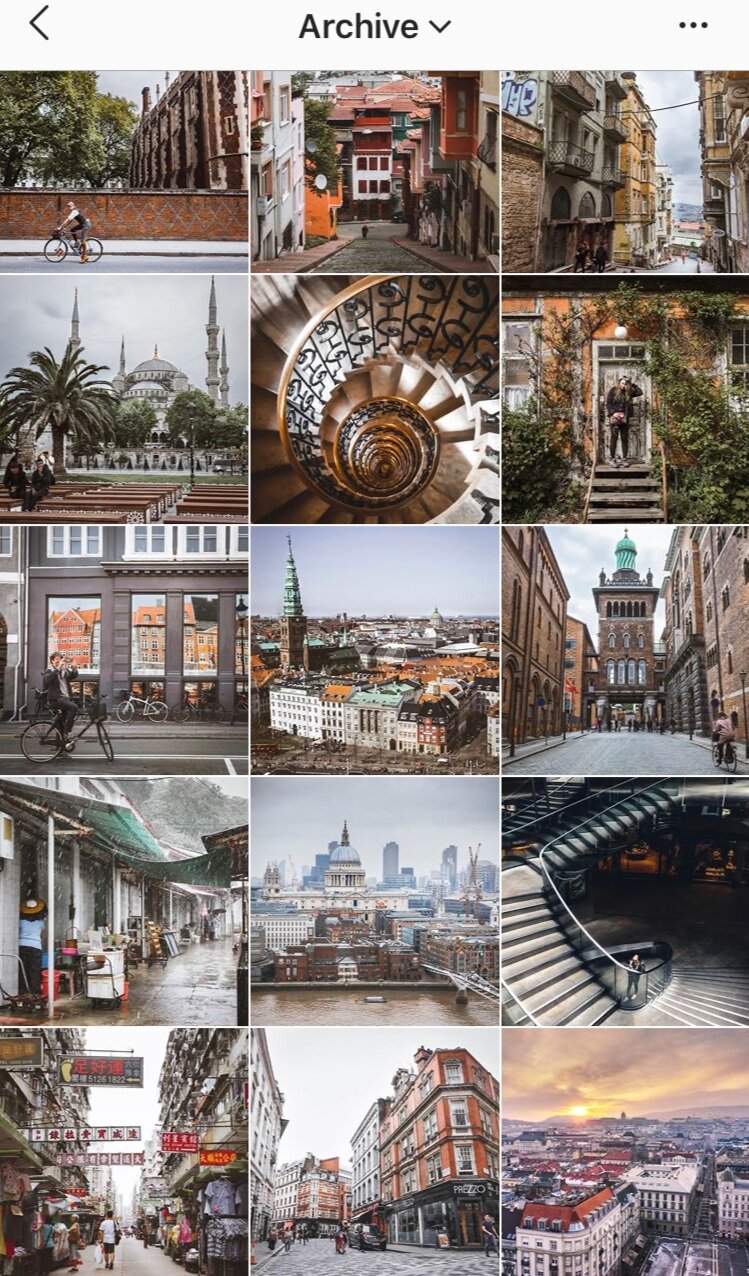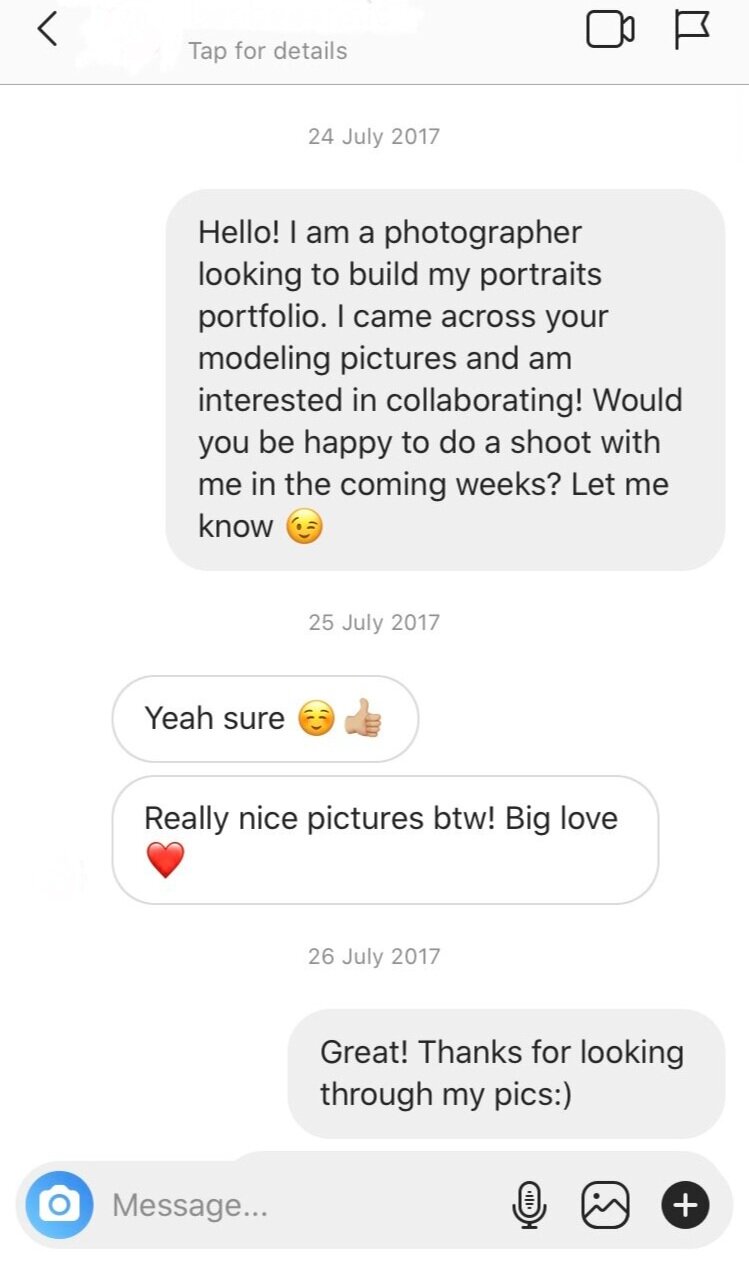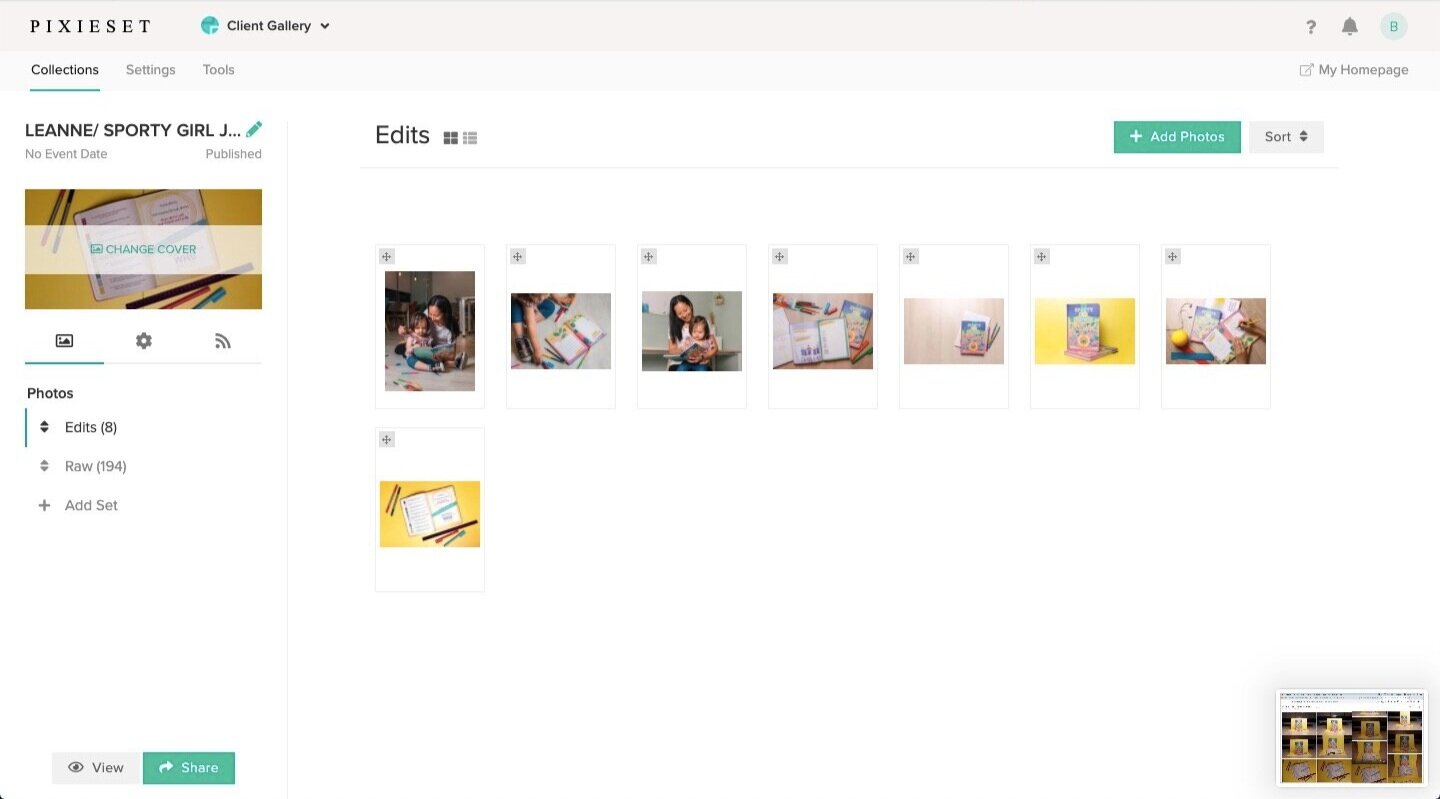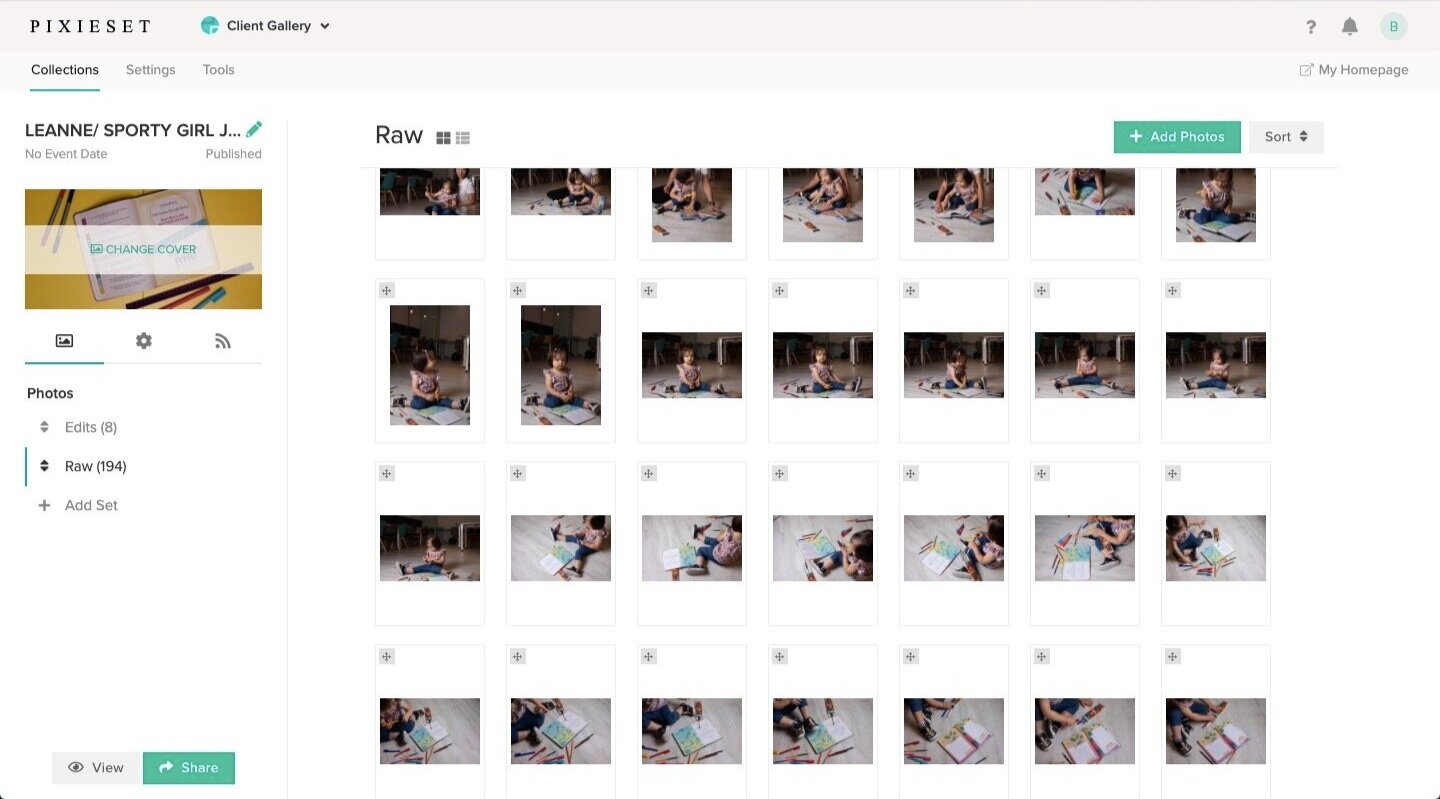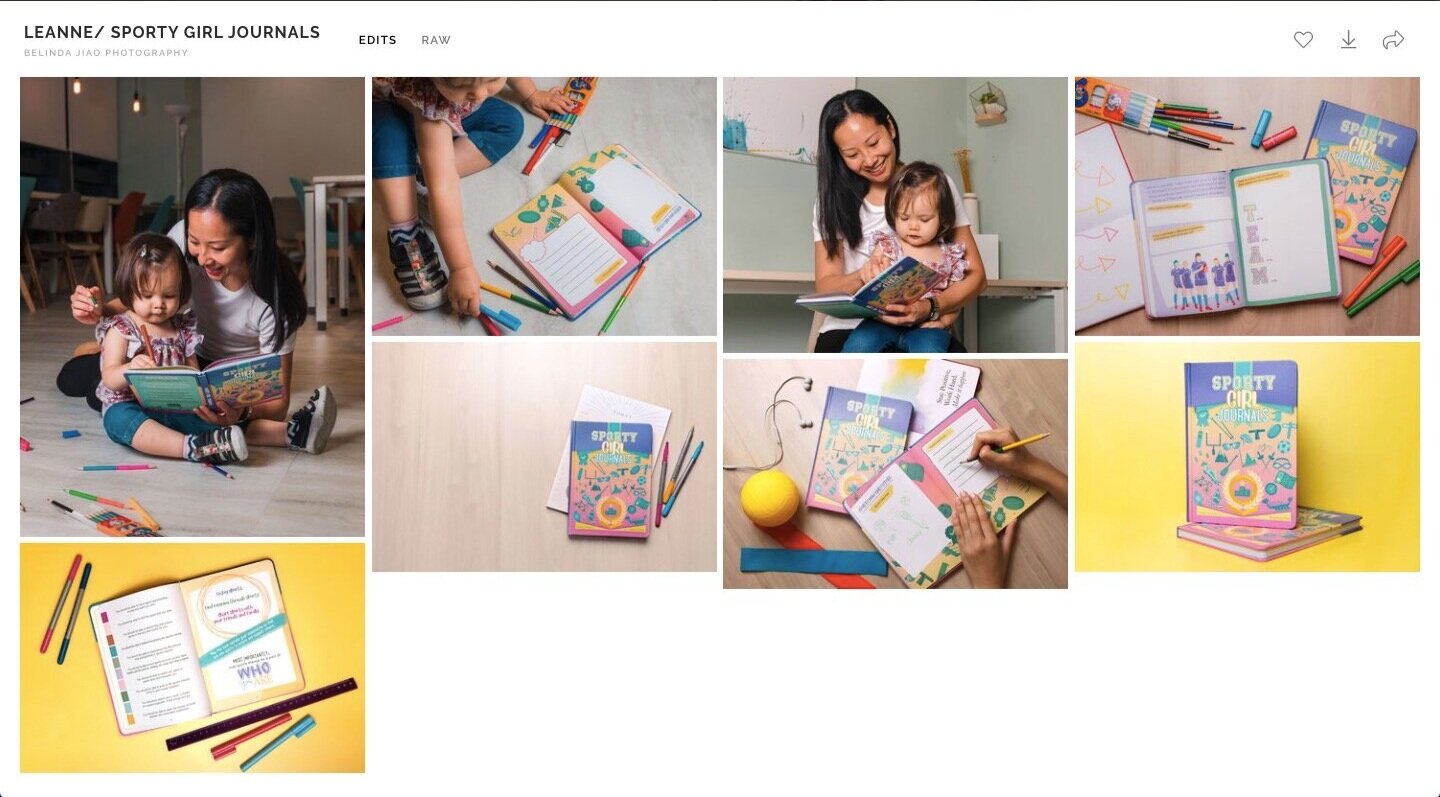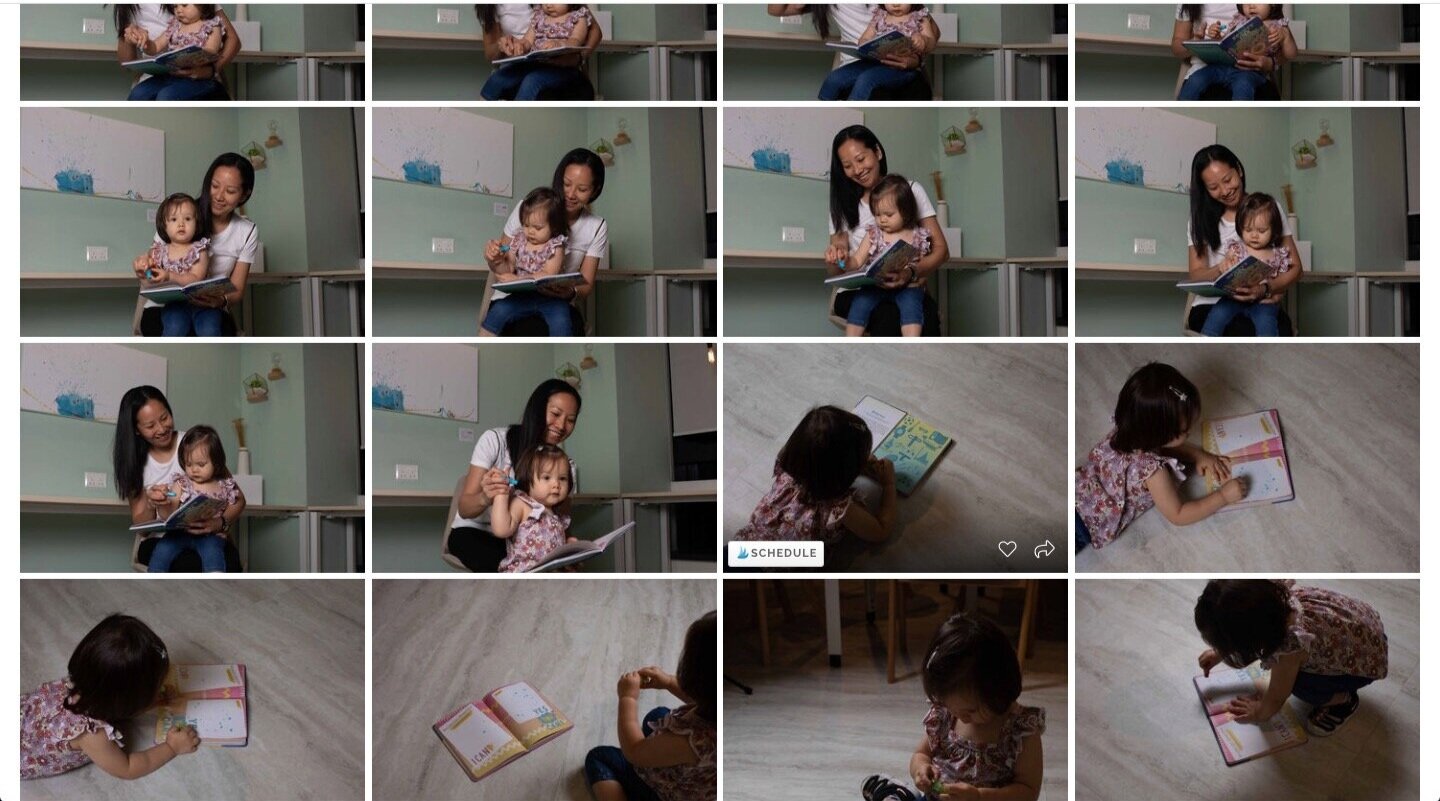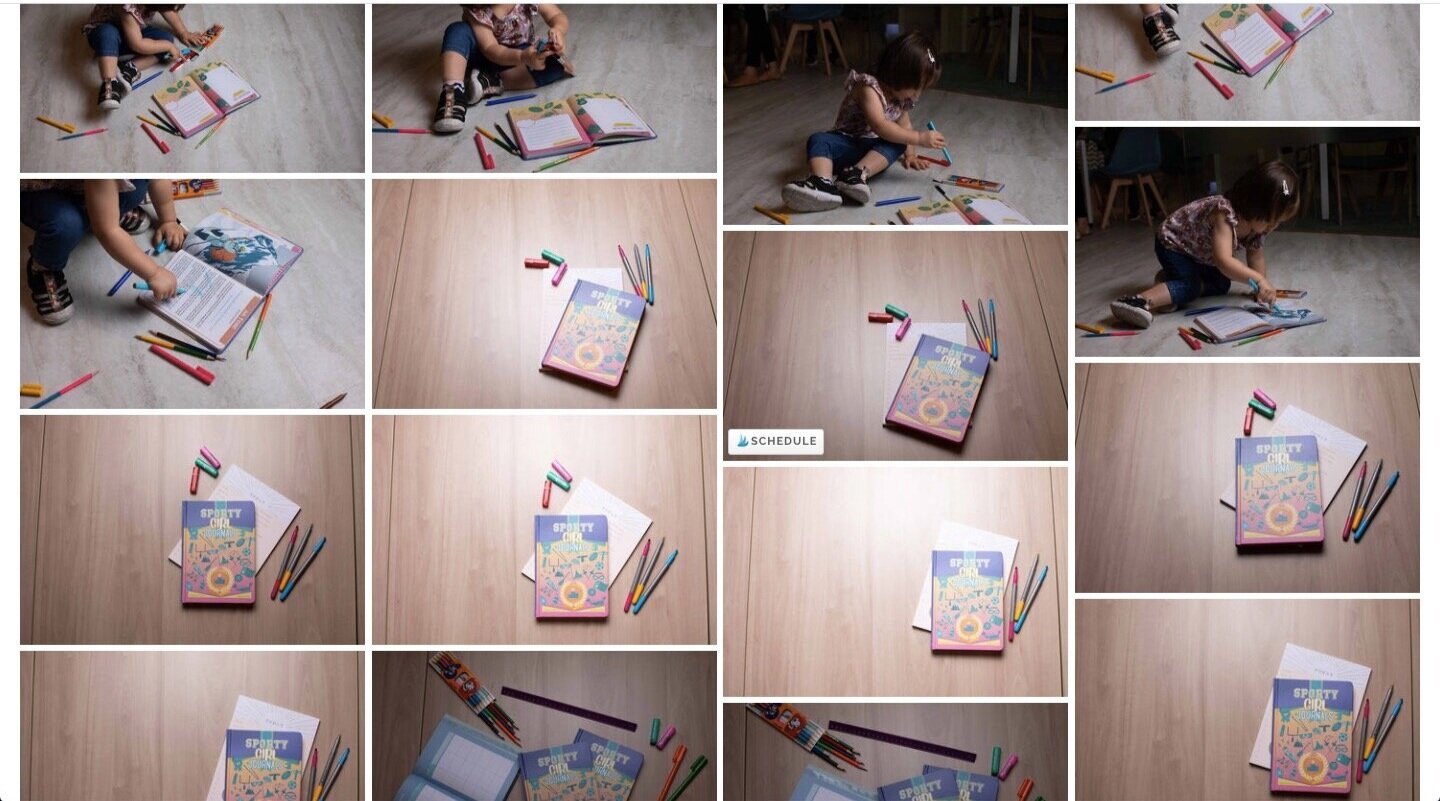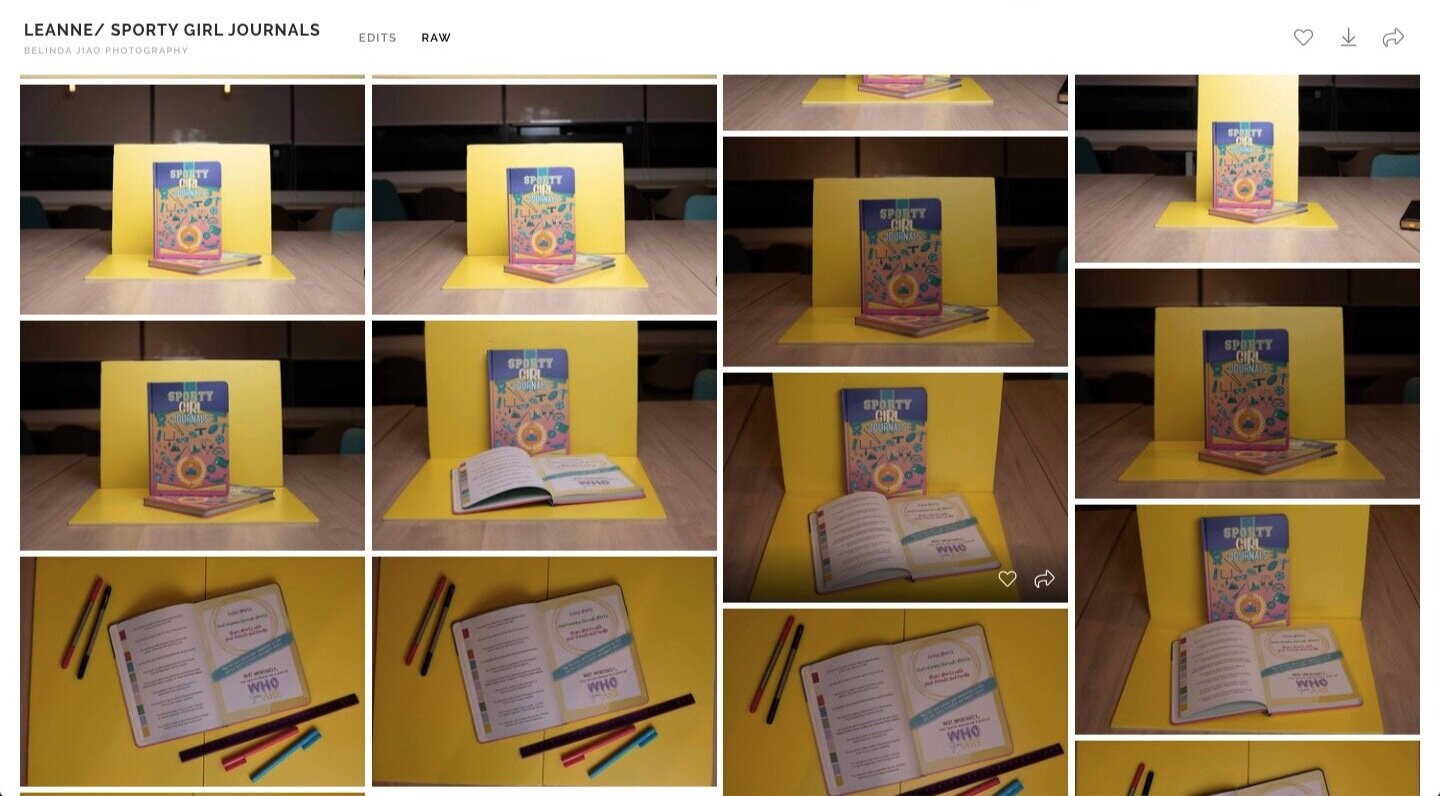Shooting portraits is among the most popular genres of photography, because the element of human interaction adds a lot of meaning to the resulting photos.
However, trying to start portraiture photography can be a huge leap for many photographers, especially those who haven’t done a single portrait shoot before in their lives.
This question comes up a lot in the photography community, and a lot of young photographers seem to get stuck at the idea of starting when you have absolutely nothing in your portfolio to show.
If this sounds like you, you are in luck! Because in this article, I am going to dive into elaborate detail everything I went through as a beginner portrait photographer - every confusion I had, every step I took, and every lesson I learnt, so that you could walk into your first shoot with confidence.
For those wanting to kickstart your first portrait session, it would be great to know where to find models, makeup artists and hair stylists, whether or not you pay them, how to split costs incurred, if you need a contract, how to deliver photos, and usage of the photos.
If you find this helpful, SUBSCRIBE to my channel via the box on the left to make the most out of my blog! Also, do share it with people who might be interested. Shoot me an email/ DM to share your thoughts too.
Also, Pin this article to your Business of/ Portrait Photography boards in Pinterest if you find it helpful!
For a visual demonstration of the points mades in the article, see the video below.
Where do Photographers Find Models?
I feel that as photographers become more advanced in their portraiture journey, they naturally tend to forget the beginner and the struggles they had had as a beginner feels more detached.
As promised, I am breaking everything down for you, while I recall how I found models to do collaborate shoots with for the very first time.
Throughout my career as a portrait photographer, I have found my models mainly via two platforms - Instagram and Modelling Agencies.
Stage I: Instagram DM
A common frustration I see beginner portrait photographers have is that all the tips out there seem to require some sort of portfolio to work. And currently you either only have experience in another field, such as landscapes or streets, or that you have limited photography experience altogether.
Trust me, if this is you, Instagram DMs definitely works even if you have never shot people before, because that was just what I did.
The key lies in who you approach and what you say.
Select Profiles with a Corresponding Strength
I recommend that you start getting your feet in the door via Instagram because you are mainly looking for people who are not working models and thus are relatively chill about the photos.
Let’s be real - models will do a TFP shoot with you only if you give them a reason to, which is normally to add value to their portfolio.
This can happen on two levels, either that their existing photos are not as good as yours, or that they are still in the early stages of forming a portfolio and simply need more photos.
If you yourself haven’t shot portraits at all, the latter option applies to you better. Look out for Instagram profiles who engage in collabs frequently - these are the people actively trying to build a portfolio.
But don’t you worry about not having shot a single portrait before. The fact that you have the skills to operate a camera well, even if it is applied to other genres, still means that you are able to use the camera better than the average person. This has to do with what you say to a potential collaborator, which will be addressed below.
Technically, you are right in that entering in to portrait photography is a catch 22 situation - you can’t get work if you don’t already have work. I have addressed the mindset shift you need to get over this stage in my earlier article “Guide to Starting a Freelance Photography Business with No Experience”.
Without getting into too much detail here again, my take on the catch 22 situation regarding photography is that you need some initial luck. But first you need to enable that luck by putting yourself out there and just send that damn message.
Plus, this doesn’t just happen in photography, this happens in life. We beat on and achieve amazing things from scratch. Why should photography be an exception?
If you have already built a preliminary portfolio from shooting friends and family, it is a bit easier for you. You should be able to make a stronger case about collaborating with someone because your portfolio acts as a basis to convince models to shoot with you.
You could contact profiles who showed a consistent interest in modelling, but are not quite a professional yet.
Highlight your Value in a Message
In crafting your message, always highlight what you can do for them.
For those who have done enough shoots to put together a preliminary portfolio, the way you put it to a model is relatively straightforward. Your value lies in being able to produce decent portrait shots of her for her book.
But for those who are reaching out to people for their first ever photoshoot, KNOW YOUR VALUE TOO!
Your value lies in the fact that you know how to use a camera. Don’t laugh, it is as simple as that! Even better to mention that since you have been doing ______ (street/ architecture/ landscape/ food etc) photography for a while now, you would like to switch gears and try portraits.
The person seeing this would then check out your feed out of curiosity, and if your photos look stunning, they should have little difficulty in visualising portrait photos done in your aesthetics.
Know your value - I can’t stress this enough. Don’t let anyone fool you into thinking a beginner’s work doesn’t have value.
Don’t believe in my words, but believe in what I do - here is my story.
I was a street photographer only when I decided to try out portraits. In order to show you how exactly I did it, I went the lengths to pull out from my archive all the street shots I had been doing - then, I had been a street photographer all my life!
This was my feed at the time.
One day, out of the blue, I decided to send a model this message.
Basically what happened was that although I didn’t have any portraiture in my Instagram feed, the model thought that the street snaps I was doing were amazing.
Also, I was clear upfront that I am in the process of building a portfolio, not claiming to be an expert in portraiture.
This helps justify why there are no portraits in my portfolio - because I am building my very first one!
Of course, you could be thinking that I just got lucky.
But I got lucky a few times.
And everyone gets lucky once in a while :)
So just put yourself out there. The people worth spending time on are those who see the worth in your craft in its early days, believing in your potential before you had any proof .
Propose a Moodboard together with the Message
In hindsight, this was what I should have done to appear more professional. Had I done so, I would probably have heard back from more models.
If you have been reading my blog posts for a while, you would know that making moodboards was one of the greatest lessons I have learnt from the school of hard-knocks.
You can refer to my earlier posts regarding how to make them and what they do:
How Moodboards help you direct your model’s posing: “Effective Ways to Direct your Model’s Posing in Portrait Photography”
How Moodboards help you choose the best shooting location for clients: “How to Help Clients Find the Best Street Portrait Locations in Hong Kong”
How Moodboards are an indication of professionalism: “Collaborate with Brands as a Photographer with Real Example I”
How Moodboard creation is a good visual practice: “5 Ways to Improve your Photography while Stuck at Home!”
In simple words, preparing a moodboard shows that you have put some thought into planning the shoot, that you know what you are doing, and that you are serious about this collaboration.
This is why a moodboard makes your proposal a much stronger one.
The easiest way to make them is to create an album of saved photos, and share a screen cap to the model you are approaching beneath the text.
You can prepare a different one for every model you are approaching, so that the board is tailored to their style and likely resonates better with them.
Stage II: Modelling Agencies
Repeat Stage I for around 5-10 times, and you will have with you a portfolio of around 10 final images that you are happy with.
Having photographed for quite a while, I mostly only do collaborate shoots with agency-represented models. The fact that they are signed with an agency means a few things. Firstly, they are actually going to turn up and (usually) on time. Secondly, they are serious about their modelling to also take you and your pictures seriously. Lastly, they are experienced in posing and grasping concepts, expediting the communication process.
But in order to work with the professional, you need a professionally looking portfolio. This is why modelling agencies is in the stage II, because without a solid portfolio, agencies most likely would not send you any models.
Once you have got your first portfolio together, you could start contacting agencies, asking for test shoots with their new faces.
In the modelling language, ‘new faces’ refer to newly signed/ assigned models who need photos for their books. ‘Test shoots’ is another way of saying collaboration shoots.
The way to go about it is to find out the general email on the agency’s website, and send a simple email containing the below:
Who you are (eg. Belinda Jiao, Hong Kong based portrait photographer)
Why you want to work with them (eg. your models demonstrate professionalism)
Portfolio (eg. pdf format, website portfolio page etc)
What you ask for (eg. new faces in town who need photos for their books)
Press send, and hope for the best! They might respond back with a few models they feel would be suitable, then you can go from there.
Do Photographers Pay Models?
No, not for collab shoots. Here are a few angles to see the issue.
Definition of Collaboration Shoots
There are two main objectives of setting up collab shoots.
The first is a financial one. It relieves beginner creatives’ financial pressure, making it easier for them to break into the industry, be it modelling or photographing.
By trading time for photos, the entire arrangement is totally affordable. So if the profiles of both parties are within each other’s leagues, this would then work out fine.
Given that your profiles are at a similar level, both the model and the photographer stands to benefit to a comparable extent as a result of the collaboration. The model gets professionally taken photos which could lead to more jobs, and the photographer gets a new personality or style in his portfolio, which can be used to demonstrate a wider skill set.
Secondly, collaboration shoots are a safe space for creatives to experiment with new ideas. Because it is an experiment and you are not sure if it will work out, you test it out on fellow creatives, not on an actual client.
Boundaries of Collaboration Shoots - Commercial Purposes
In some commercial arrangements, photographers sometimes pay models because they are acting on behalf of the client to hire them.
If you are paid as a photographer by someone for a job, NEVER ask a model to work for free for that job. This is something strictly against industry standards, and photographers have the moral responsibility to be transparent about the fact that they have been given monetary remuneration.
An extension of this is that since the client is using these photos for commercial purposes, for advertising, menus, catalogues, lookbooks etc, the model should be entitled to part of the proceeds gained as a result of the shoot.
Integrity remains the most important trait in a photography career - the best way to show respect to fellow creatives is to respect their wage. Treat others as how you would have them treat you.
Boundaries of Collaboration Shoots - Imbalance in Profiles
Though personally, I have encountered models who asked me to pay them for shooting with them, and I also know other photographers who pay a model. In my opinion, this happens when the above premises is no longer true - both profiles are not of a similar strength, so one party stands to gain way more than the other.
Here’s an example to make it easier to understand. For instance, if I contact Jennifer Lopez asking to do a collab shoot with her, of course she is not going to model for me for free. The reason is that she has long been well-established in the industry, and she wouldn’t benefit much from the set of images from our potential collaboration.
On the flip side, I also turn down collaboration requests from models whose styles are already in my book. The same is true for photographers: if shooting with a model doesn’t quite add to your portfolio, you totally have the freedom to say no and even ask to charge.
Collaborations are set up specifically to help creative artists start their careers in the industry without having to spend a ton. Working for free only makes sense if it is a mutually-beneficial arrangement. This requires the positions of the collaborating parties to be relatively even.
Boundaries of Collaboration Shoots - Confidence in Performance
It is not only about who you shoot with, but what you are shooting. Having done quite a number of collabs now, I became increasingly selective with who I collab with, because I want to be intentional in what I am getting out of each collab.
Ideally, you want to learn something new every time you shoot for free. But if you keep shooting the same things, or shoot whatever the model wants, you are not improving.
Therefore, there is this added factor you should also consider - is the model going for a style that you know you could handle already? If so, feel free to politely suggest other styles that you would like to experiment with, that you are not entirely sure if you could pull off on an actual client shoot.
If they wouldn’t budge, simply ask to charge.
Do Photographers Pay Makeup Artists and Hair Stylists?
Along similar lines, no, not in a collaboration shoot.
Where a collaboration involves a crew, no one is paying no one. You can think of it as a trade between everyone’s time and the professionally retouched end photos from the photographer.
Though in the early stages of shooting portraits, there is no need to worry too much about makeup and hair, because photographers should be focusing on more fundamental aspects of their craft, eg basic camera settings, communicating with models, basic lighting techniques etc.
Who Bears the Miscellaneous Costs Incurred (eg. Venue, Costumes, Transport etc)?
Technically, because a collaboration shoot is supposed to benefit everyone equally, the costs incurred should also be spread evenly among all parties.
Though, sometimes these costs are too petty to get all worked up about. A roughly equal expenditure on everyone’s part would be good enough.
Transportation
Everyone pays for their own transport to and fro the shooting location.
My usual practice is that even if we are shooting different locations, they are all within walking distance and therefore would not require extra transportation during the shoot.
But if it happens to be the case where you need to arrange for the entire crew to commute between locations, it is reasonable to split the cost with the members of the crew.
Venue
If it is a studio shoot at the photographer’s studio, the photographer lets the crew use the studio for free.
If the crew needs to book a studio or any other venue, the cost is usually split between the photographer and the stylist/ designer, or whoever initiated the shoot. It makes little sense to ask someone on a shoot, then tell them that they need to pay.
Costumes
This is usually provided by the stylist or the designer.
For outfits owned by a designer, he lets the model wear the outfits for free for the shoot.
For outfits put together by a stylists, it is convention that he bears the cost of gathering all the materials and garments.
Some shoots also involve more complex makeup and hair design, and that will be the HMUA’s (Hair & Makeup Artist) job to grab those materials.
Depending on how the discussion goes during preparation, the model and photographer can also bring along pieces that would fit the aesthetics of the shoot.
Food & Drinks
In parts of the shoot, members of the crew might need water or snacks.
Ideally, everyone pays for what they consume.
But the situation can sometimes be less obvious because the MUA might be doing makeup on the model and thus asks someone else on the team to get them coffee.
This is entirely a matter of personal preference, whether or not to ask to be paid back.
Do Photographers Sign Contracts with Models?
The idea of having a contract or any sort of legal agreement might seem scary to anyone beginning in the portraiture space.
This is totally understandable, because trying to master the technical side of photography and the business side of it all in one go can be overwhelming.
Therefore, it is alright to forget about the terms and conditions for your first few shoots - focus on getting the basics right.
But as you grow as a photographer you will know, that complications can happen after the shoot, which makes your life a total pain.
For collaboration shoots, contracts feel like a bit much because it requires signatures of all parties. But ideally, you should at least have a collaboration agreement that outlines the basic deliverables that everyone is to bring to the table, and what they can and can’t do with the photos.
Here are a list of things that you could consider making clear upfront, before you commit yourself into a collab:
Number of edited photos you are to deliver, and when
If the crew gets to participate in culling
If you are delivering any raw files
If the crew members are allowed to request amendments
What the images can and cannot be used for
How posts should be credited
When you are just starting, it is hard to image in what ways can things go wrong. At the beginning, everyone is nice to everyone. But you will soon encounter some of the most mind-blowing, intriguing instances where things blow up in your face, and you wish you had an agreement in place.
That is when the sense of urgency kicks in, and this contract/ agreement thing will all make sense to you.
How to Deliver Photos Back to Models?
This can vary depending on 1) whether or not you are involving the collaborators in selecting photos for final editing and 2) whether or not you are delivering raw photos.
To avoid potential complication, these should be addressed in the terms, if not at least agreed verbally.
Who Picks the Photos for Final Editing?
Depending on how you work with your model and your team, sometimes they might want to be involved in the selection process.
If this is the case, you will need to deliver the proof of all the images from the shoot before delivering final retouched images.
Whereas in other cases you are doing the culling alone, you can skip this step.
My opinion on this is that the photographer should take on the task of selection himself to speed up the process. Besides, in most circumstances, the shoot is based on the artistic inspiration of the photographer, so it makes sense for the photographer to have the final say.
Do you Deliver Raw Photos?
Raw photos can be delivered simply at one go together with edited shots, typically via storage systems like Google Drive, Drop Box, WeTransfer etc.
If you are shooting raw format, export all photos in jpg format so that they can be uploaded without much difficulty.
My opinion on this is that photographers should not return raw photos. The best way to ruin your reputation is to get awful work in front of people accredited to you.
If you readily let people have the raw files, you have no control what they do to them - put a nasty filter on it, make a weird crop, add in some snapchat frames, and they post it onto their account implying that it is a finished work from you.
Please don’t put yourself in such a vulnerable position, fellow photographers. I know you want to be friendly to everyone, but please don’t to so at the expense of your own reputation.
For a more in depth explanation of why I believe that raw photos should not be delivered, I have a separate article on that.
What if Collaborators are Picking Shots Together but Raw Files are not Delivered?
This is essentially what usually happens on a paid shoot - the model picks her favourite shots for the photographer to edit, but does not get back the rest of the raw files.
This means that you will need a platform which allows the model or your team to view the photos as a gallery, but doesn’t allow download by default.
In this scenario, Pixiset is your choice of platform. See the screenshots below.
These two screens show the backend of Pixiset - I add all the raw photos into one set, then publish the gallery for my model or team’s review.
There is also the edited set in the gallery because this is now a concluded project, and I have subsequently added the edited shots as a separate set.
Pixiset automatically generates a gallery, in which the images are clickable to be enlarged.
Models or collaborators can then get back to me with a list of shots they would like to have edited, and as I mentioned above, I upload the edits into a separate set.
Once everyone is happy with how the final images turn out, download can then be made available.
If you like, you can also send over the final files via Google Drive or other platforms you are more familiar with, after the edits are confirmed by everyone.
What can the Photos be Used for?
This pretty much again depends on your pre-shoot agreement, but here are the industry norms that I have observed to be throughout my career.
Images are for strictly personal use, limited to social media posting and website display purposes.
Any usage involving commercial purposes, such as being sold, used for publication are not included in the scope of collaborative work.
This is not to say that images resulting from collabs can never be used in a commercial setting, but extra negotiations have to take place to account for such types of usage.
I have run into situations where models would like to use images I shot of her on a collab for publication purposes, which means that I will be losing out if I didn’t have an agreement that I must be paid extra for these images to be used to make money.
Again, this shows the importance of having an agreement that binds every party to the collaboration.
Summary
In this article, we talked about:
How to find models for collaboration shoots,
If photographers should pay models, MUA and hair stylists,
Who should bear the miscellaneous costs incurred,
If contracts are necessary,
How to deliver photos after collaboration shoots, and
How the resulting images can be used.
More sharing coming soon!
SUBSCRIBE via the box on the left for more PRO tips, and follow me on Instagram (@_bjiao__) and let me know what you think in the comments!
Share this article on Pinterest too!
Keep shooting, keep creating!
The mission of this blog is to provide the best insider information in the photography industry, as openly as possible. You have direct access to my
first-person experience as an aspiring photographer who talks, but also works.
Honest opinion are rarely available as public resources because this is a competitive industry. Huge sums are made when such information is delivered in the form of mentorship and workshops.
This blog is a great way in which I cover my daily expenses, but also provide real value.
If you have learnt something that would be worth at least $10, please consider donating to the page. This enables me to keep creating content and helping more people sustainably.
Your continued support for the blog is appreciated!

